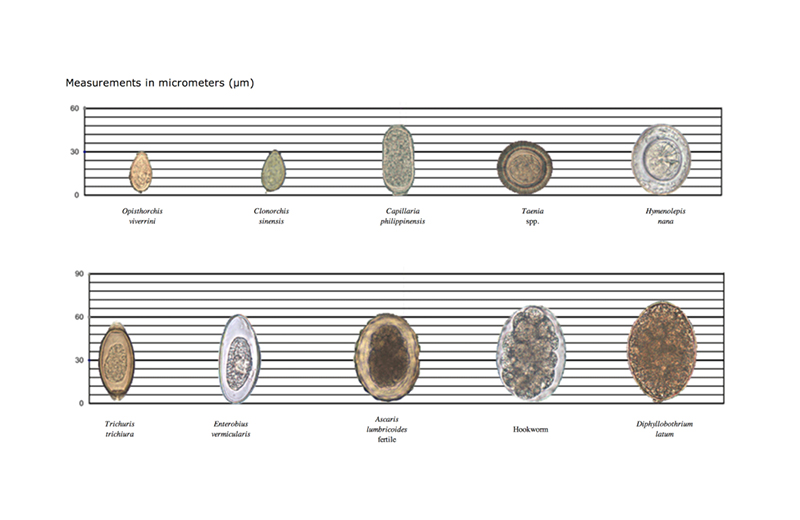It had been such a warm day in Chennai and like everyone else I was also looking at the clear skies wondering how much hotter it could get. As I was thirsty and hungry, I went to a nearby street vendor selling some fruits which he had cut and laid out on display. Just as I was making my decision on what to buy, I overheard a conversation from other buyers who were talking about some kind of ‘worms’ that causes serious ‘illness’ in people. Being the curious type, I went ahead and joined in the conversation, while I continued to gulp down the pieces of mangoes which the vendor had wrapped in the previous day’s newspaper.
Here is the gist of the conversation from the alleged ‘worm expert’.
It turns out the worms the person was talking about are called Helminths. So what are Helminths? And how do they make people fall ill? Well, Helminths are basically worms that are widely present in areas which plagued by poor sanitation and where open defecation is widely practised. The Helminth worms are usually tape worm (Taenia solium), hook worm (Anclostoma duodenale and Necator americanus), round worm (Ascaris lumbricoides), whip worm (Trichuris trichiura) etc., I realised that the Helminths eggs and larvae are the agents that cause infection, and are usually discharged into the environment via faeces. The ‘Worm expert’ told me that the viable eggs will be infective when it develops as a larva and gets attached to a suitable host such as humans.
But, “Why is it important to know about Helminths?” I wanted to know. “Because it causes various kinds of illnesses in human beings,” he said, adding that these illnesses are commonly known as Helminthiases. Helminths are transmitted mainly through water and soil through the oral – faecal transmission pathway (popularly referred as the F-diagram). “Synergy between WASH and nutrition” – It’s complicated The worms are widely present in faeces, sewage, sludge and fecal sludge and crops. Consuming infected water or food, physical contact when handling infected soil and water, or even walking barefoot on contaminated soil, can lead to one getting infected. Wow! who would have thought of that, right?
The worm expert told me, that worms come in sizes varying from 1 mm to several metres in length. The eggs range from 20 to 80 microns’ size, which means they cannot be seen by the naked eye. Interestingly, the eggs are also sticky in nature, and can stick to vessels, furniture, cash, food, water, door handles, stair cases rails, fingers and nails etc., thereby escalating the risk of infection without people even realising it.
The situation is so alarming that the World Health Organisation in 2015 called Helminthiases a major health concern. Helminths infections in human beings affect the nutritional status by causing poor absorption of nutrients, loss of appetite, bowel obstruction and increased blood loss. Long term and heavy infections can cause abdominal pain, diarrhoea, blood and protein loss, and slow down the physical and cognitive growth. Heavy infections with whipworm and roundworm can even impair growth in children. Hookworm infections are a major cause of anaemia in pregnant women and children.
Wow, not only had I learnt something about these ‘dangerous worms’ that makes people sick, but thanks to my newly established camaraderie with the ‘Worm expert’, I went on to ask him more questions: How do we ensure that Helminths are eliminated from our surroundings? There are various ways, he said. But the most important one is to make sure that all those materials which consists of Helminths are treated before being released into the environment. In that way, we can minimise the risk of infection, if not completely eliminate it.
I realised that we have reached the end of our intense conversation. But there was one more question to which I needed an answer. How do we reduce the incidence of Helminths -related infections in our day-to-day activities, I wanted to know? “Well, the obvious yet often overlooked practice of hand washing, is one of the most effective ways to beat the infection cycle. In addition to that, thorough washing of vegetables and fruits before consumption should be compulsorily followed,” the worm-expert said. I thought of the delicious mangoes that I had just gulped down. I had not bothered to find out if the fruit had been washed properly, and how long ago it had been cut.
I thanked the worm-expert profusely for answering all my questions and bade him goodbye. As I left, he said: “Don’t underestimate the power of what you can’t see or smell.” I was strangely intrigued. So I decided to find out more. And what I found out included a wealth of information on the universe of microbial pathogens and their implication on public health, and how the very act of defecating in the open can lead to Helminth infection and what can be done to keep ourselves safe.
But more of that in the next part, where we will talk about Helminths infection and its very obvious relationship to open defecation.
For further reference
https://www.unicef.org/media/files/IntegratingWASHandNut_WHO_UNICEF_USAID_Nov2015.pdf (accessed on April 24, 2017)
http://atm.eisai.co.jp/english/ntd/helminthiasis.html (accessed on April 25, 2017)
B.E. Jimenez-Cisneros and C. Maya-Rendon (2007) “Helminths and Sanitation”, Communicating Current Research and Educational Topics and Trends in Applied Microbiology

Suneethi Sundar
Specialist, TNUSSP


Leave A Comment
You must be logged in to post a comment.